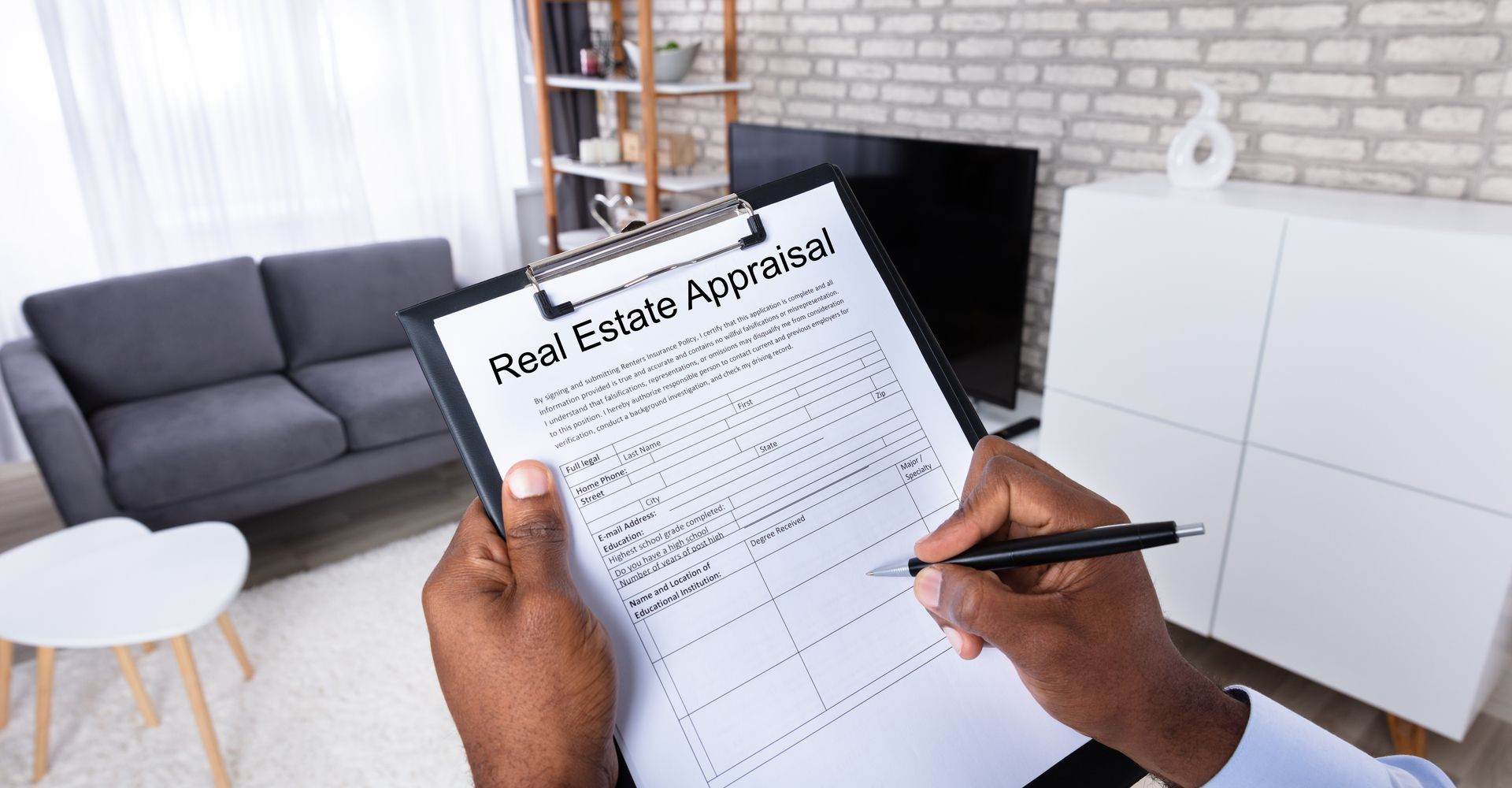The key lies in recognizing the fine line between current worth and future possibilities. It’s not just about what you see now; it’s about envisioning what could be. By understanding this contrast, you can unlock hidden opportunities that others might overlook. Whether it’s a fixer-upper waiting to shine or an undervalued gem primed for growth, knowing how to spot these nuances is crucial in the world of real estate investment. Stay ahead of the game by learning how to assess properties with a keen eye towards their untapped potential and good investment strategies.
Key Takeaways
- Understand Real Estate Investment: Familiarize yourself with the basics of real estate investment to make informed decisions.
- Analyze Investment Properties: Use key valuation methods to evaluate properties effectively and identify their potential for value increase.
- Consider Factors Influencing Value: Take into account various factors such as location, market trends, and property condition that can impact the value of an investment property.
- Maximize Returns with Strategies: Implement strategies like renovations, property management improvements, and market timing to enhance returns on your investment.
- Be Aware of Risks and Roadblocks: Acknowledge the potential risks involved in real estate investment and be prepared to navigate through challenges that may arise.
- Use Financial Metrics for Evaluation: Utilize financial metrics like cap rate, ROI, and cash-on-cash return to assess the profitability of an investment property accurately.
Understanding Real Estate Investment
Understanding Real Estate Investment
Evaluating the potential of a property to increase in value involves analyzing various factors such as rental yield, capitalization rate, and ratio. Firstly, analyze the property’s location to determine its growth potential. Consider aspects such as proximity to amenities, transportation links, and future development plans. Next, assess the current condition of the property and identify renovation opportunities that could enhance its value significantly.
Market research plays a crucial role in evaluating property potential. Conduct a thorough analysis of the local real estate market to understand trends and forecasts. Explore demographic data for insights into population growth or decline that may impact property values. Evaluate supply and demand dynamics within the area to gauge future appreciation prospects.
Investment Types
There are two primary types: residential and commercial properties. In residential investment, factors influencing property values include neighborhood amenities like parks or schools which can attract buyers or tenants seeking convenience. Analyzing historical price appreciation trends and year in the residential sector can provide valuable insights into future growth potential.
On the other hand, commercial properties require a different approach for evaluation by adding strategies. Examine rental rates and occupancy levels within the commercial sector as indicators of demand and profitability. Assessing potential business growth in the area can help predict rental income stability over time. Moreover, consider zoning regulations and development plans that could affect future returns on commercial real estate investments.
Key Valuation Methods
Capitalization Rate
To evaluate property potential for value increase, start by calculating the cap rate. This helps assess the investment return possibility. Comparing cap rates with industry standards is crucial to determine if an investment is worth it. It’s essential to take into account various risk factors that can influence cap rate calculations.
When analyzing investments, understanding the capitalization rate is vital. For instance, consider a property with a cap rate of 6%, compared to an industry average of 8%. This discrepancy indicates whether the property has higher or lower income potential than similar properties in the market rate.
- Pros:
- Provides a clear snapshot of potential returns.
- Allows for quick comparison with industry standards.
- Cons:
- Does not account for changes in property value over time.
Gross Rental Yield
Another method to assess property value increase is through gross rental yield analysis. By determining this yield, investors can understand how much income a property generates relative to its value. It’s important to factor in maintenance costs and rate as they directly impact gross rental yield.
When considering investing in real estate, looking at the gross rental yield provides insights into how efficiently a property generates income compared to its overall worth.
- Calculate gross rental yield: Divide annual rental income by property value.
- Analyze results: A high percentage indicates better revenue generation efficiency than a lower one.
- Example:
- Property A generates $20,000 annually and is valued at $400,000; therefore, its gross rental yield would be 5%.
Analyzing Investment Properties
Importance of Comparables
When evaluating property potential for value increase, comparables play a crucial role. These properties help in determining the market value of the target property by considering factors like size, location, and condition. Adjusting comparables to account for differences ensures a more accurate assessment of the property’s value.
For instance, if you are analyzing a two-bedroom house in a suburban area, comparing it with similar houses in terms of size and condition within the same neighborhood provides valuable insights into its potential worth.
Home Appraisal Significance
Understanding how home appraisals influence property values is essential when assessing investment opportunities. Factors such as location, condition, and amenities significantly impact appraisal outcomes. By grasping these elements, investors can make informed decisions about their real estate ventures.
For example, when appraising a waterfront property with high-end finishes and modern amenities against similar properties in less desirable locations or with outdated features helps determine its true market value accurately.
Factors Influencing Value Increase
Value Appreciation Factors
To evaluate property potential for value increase, investors need to consider various factors. Market research plays a crucial role in understanding the current market conditions and predicting future trends. By analyzing comparable properties, rental rates, and demand-supply dynamics, investors can make informed decisions.
Valuation methods are essential tools in assessing property value accurately. Methods such as the income approach, sales comparison approach, and cost approach help determine the fair market value of a property. Understanding these methods enables investors to gauge whether a property is undervalued or overvalued.
Appreciation drivers like location, economic growth, infrastructure development, and neighborhood improvements significantly impact value increase potential. Properties located in high-demand areas with strong economic fundamentals tend to appreciate faster than those in stagnant markets.
Diversification strategies are vital for mitigating risks and maximizing returns on investment portfolios. By diversifying across different types of properties or geographic locations, investors can reduce exposure to market fluctuations and enhance long-term profitability.
Depreciation Impact
While focusing on value increase is crucial, it’s equally important to consider factors that could lead to depreciation. Physical deterioration due to lack of maintenance or natural disasters can decrease a property’s value over time.
Functional obsolescence stemming from outdated design features or inefficient layouts may also contribute to depreciation. It’s essential for investors to address these issues proactively through renovations or upgrades to maintain or enhance their properties’ values.
Diversification Benefits
Diversifying an investment portfolio by including various types of real estate assets like residential properties, commercial spaces, and industrial units offers several benefits. Increased cash flow from multiple sources helps balance out any underperforming assets within the portfolio.
Moreover, diversification reduces overall risk exposure by spreading investments across different sectors that may respond differently to market conditions. This strategy provides stability during economic downturns while still allowing for capital appreciation opportunities.
Maximizing Returns Strategies
Value-Add Approaches
To evaluate property potential for value increase, consider implementing value-add approaches. These strategies involve making improvements to the property to enhance its overall worth. For instance, renovating outdated features, adding modern amenities, or improving energy efficiency can significantly boost a property’s value. By enhancing the appeal and functionality of a property through these upgrades, you can attract more interested buyers or tenants willing to pay a premium price.
Value-add strategies also include optimizing underutilized spaces within the property. Converting unused areas like basements or attics into livable spaces such as additional bedrooms or recreational rooms can substantially increase the property’s market value. Moreover, upgrading essential systems like plumbing, heating, and electrical components not only enhances safety but also elevates the overall desirability of the property.
Forecasting Price Expectations
Another crucial aspect of evaluating property potential for value increase is forecasting price expectations accurately. This involves analyzing market trends, economic indicators, and local factors that influence real estate prices in your area. By staying informed about upcoming developments such as infrastructure projects or commercial expansions nearby, you can anticipate how these changes might impact property values in the future.
Monitoring interest rates and mortgage trends is vital when predicting future price expectations. Understanding how fluctuations in borrowing costs affect buyer behavior can help you assess whether it’s an opportune time to invest in enhancing your property for increased returns.
Scenario Analysis
Scenario analysis plays a significant role in evaluating Property Potential for Value Increase by helping you prepare for various outcomes based on different circumstances. By creating best-case, worst-case, and base-case scenarios regarding your investment decisions and their potential impacts on your property’s value growth prospects allows you to make informed choices.
For example:
- Best-case scenario: Implementing multiple value-add strategies leads to a substantial increase in your home’s appraisal.
- Worst-case scenario: External factors like economic downturns negatively impact real estate prices.
- Base-case scenario: Making moderate improvements results in steady appreciation over time.
Risks and Roadblocks
Decreasing Value Factors
When evaluating property potential for value increase, it’s crucial to consider factors that could lead to a decrease in value. One significant factor is the condition of the property. Properties in poor condition or with structural issues may require costly repairs, impacting their overall value negatively. Location also plays a vital role; properties in undesirable neighborhoods or areas with high crime rates often struggle to appreciate in value over time.
Another key factor to watch out for is market trends. A sudden downturn in the real estate market can significantly impact property values, leaving investors at risk of losing money on their investments. Zoning changes or new developments near the property can affect its desirability and subsequently its value.
- Property condition
- Location
- Market trends
- Zoning changes
Real Estate Valuation Challenges
Risk assessment when evaluating property potential involves navigating various challenges inherent in real estate valuation processes. Determining an accurate valuation requires considering numerous variables such as comparable sales data, replacement cost analysis, and income approach methods. Each method comes with its own set of complexities and requires expertise to interpret correctly.
Moreover, external factors like economic conditions, interest rates fluctuations, and regulatory changes can further complicate the valuation process by introducing uncertainties that may impact property values unpredictably.
- Comparable sales data analysis
- Replacement cost analysis
- Income approach methods
Financial Metrics for Evaluation
Essential Numbers
When evaluating property potential for value increase, certain financial metrics are crucial. These include the property’s current market value, historical sales data, and projected future appreciation rates. Understanding these numbers provides insights into the property’s growth potential over time. For instance, analyzing past price trends can help predict future value increases.
earnings reports from rental income or other investments related to the property play a significant role in determining its profitability. Calculating metrics like net operating income (NOI), cash-on-cash return, and capitalization rate helps assess the property’s financial performance accurately. By focusing on these essential numbers, investors can make informed decisions about maximizing their returns.
Price Appreciation Determination
Price appreciation is a key factor when evaluating a property’s potential for increased value. This metric reflects how much the property’s worth has grown over time based on market conditions and demand. Analyzing historical data to identify patterns of consistent appreciation can indicate a strong investment opportunity with high potential for future growth.
For example, if a property consistently appreciates at an average rate higher than similar properties in the area, it signals a positive trend that could lead to substantial value increase in the future. Investors often look at this metric closely as it directly impacts their overall return on investment and long-term wealth accumulation.
Rental vs Risk-Free Rate
Comparing rental income to risk-free rates is another vital aspect of evaluating property potential for value increase. The rental yield represents the annual rental income generated by the property as a percentage of its total cost or current market value. Contrasting this figure with risk-free rates such as treasury bonds helps investors assess whether investing in real estate offers better returns compared to safer but lower-yielding alternatives.
For instance, if an investor expects higher rental yields from a particular property compared to what they would earn from low-risk investments like bonds, it may indicate that investing in real estate could result in greater financial gains over time.
Legal and Tax Considerations
Taxes Awareness
When evaluating property potential for value increase, it’s crucial to consider tax implications. Being aware of taxes can significantly impact your investment returns. Property taxes, capital gains taxes, and rental income taxation are essential aspects to evaluate. Understanding how these taxes apply to your specific situation can help you make informed decisions.
Being mindful of tax deductions is also vital in maximizing your property’s value. Deductions like mortgage interest, property depreciation, and repair expenses can lower your taxable income. This reduction translates into more money in your pocket or reinvested back into the property for further improvements. By leveraging these deductions effectively, you can enhance the overall financial performance of your real estate investment.
Mindfulness of Depreciation
Depreciation is a key aspect that influences the value increase potential of a property over time. Understanding how depreciation works and its impact on taxes is crucial when evaluating real estate investments. Properties depreciate over time due to wear and tear, which allows investors to deduct this depreciation from their taxable income.
Future Trends in Real Estate Investment
Market Forecasting
When evaluating property potential for value increase, understanding real estate market trends is crucial. By analyzing market forecasts, investors can anticipate future development plans and identify areas with high growth potential. For instance, if a city announces infrastructure projects or new commercial developments in an area, it could signify a rise in property values.
Investors should also consider demographic shifts and economic indicators to predict future demand for properties. For example, an influx of young professionals into a neighborhood could indicate increasing property values due to higher demand. By staying informed about the future development trends in different regions, investors can make well-informed decisions on where to invest.
Wealth Building through Diversification
Diversifying your real estate investments can be a smart strategy when aiming to increase property value over time. Investing in various types of properties such as residential homes, commercial spaces, or vacation rentals spreads risk and maximizes wealth-building opportunities. Diversification across different locations helps mitigate risks associated with local market fluctuations.
Moreover, exploring alternative real estate investment options like Real Estate Investment Trusts (REITs) or crowdfunded properties can provide exposure to diverse markets without the need for direct ownership of physical properties. This approach allows investors to benefit from future appreciation potential across multiple sectors while enjoying liquidity and flexibility in their investment portfolio.
Closing Thoughts
You’ve journeyed through the intricate world of real estate investment, from understanding its nuances to exploring key valuation methods and strategies for maximizing returns. Along the way, you’ve uncovered the factors influencing property value and navigated potential risks and roadblocks. By delving into financial metrics, legal aspects, and future trends, you’re better equipped to evaluate property potential for value increase.
As you embark on your real estate investment endeavors, remember that knowledge is power. Continuously educate yourself, stay updated on market trends, and don’t shy away from seeking expert advice when needed. With a solid foundation laid by the insights shared here, you’re poised to make informed decisions and unlock the full potential of your property investments.
Frequently Asked Questions
How can I determine the potential of a property for value increase?
To evaluate a property’s potential for value increase, consider factors like location trends, market demand, and upcoming developments. Conduct thorough market research and analysis using valuation methods to make informed decisions on investment opportunities.
What are the key metrics used to analyze investment properties?
Key metrics include cap rate, cash-on-cash return, gross rent multiplier (GRM), and internal rate of return (IRR). These metrics help investors assess profitability, risk levels, and overall performance of an investment property before making a purchase decision.
What factors influence the increase in property value over time?
Factors such as location desirability, economic growth in the area, infrastructure development, demographic changes, and market conditions play significant roles in influencing property value appreciation. Understanding these factors can help investors identify properties with high potential for long-term value increase.
How can I maximize returns on my real estate investments?
To maximize returns on real estate investments, strategies like renovating properties to increase their appeal and rental income or implementing efficient property management practices can be effective. Diversifying your portfolio across different types of properties or markets also helps spread risk while potentially increasing returns.
What are some common risks and roadblocks associated with real estate investments?
Common risks include market fluctuations affecting property values or rental income variability. Roadblocks may include regulatory changes impacting tax implications or unexpected maintenance costs reducing profitability. Mitigate risks by conducting thorough due diligence before investing and having contingency plans in place.






